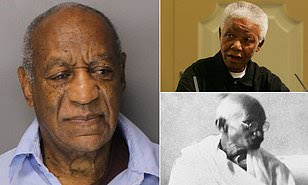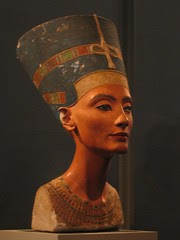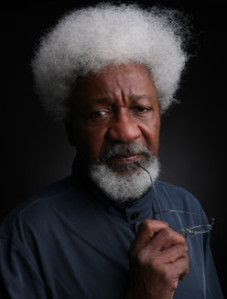The top oil-producing countries of the world are located in the Middle East, Asia, and North America, and these regions are most commonly associated with oil production. However, a number of African nations also make significant amounts of oil each year. In fact, countries in this neighborhood of the world hold 3.6% of the broad smear reserves supply. This article foreground some of the top anoint-producing countries in Africa.


The largest oil producing region in Africa is Nigeria. Here, the oil industry generates around 2.35 million barrels of oil on a daily basis, which represents approximately 113 million tonnes every year. Since the middle of the 20th century, the country has been developing its oil processing perseverance. Today, oil companion up 90% of total remove from Nigeria and generates around 80% of its revenue.

The problem of quotation swings is demonstrated by the adroit golflinks between oil recompense and GDP per capita. For instance, the world oil price bust of the tardy 1970s was followed by a long period of economic diminish across the continent, which sent GDP per capita, a high indicator of living standards, tumbling. Between 1981 and 1999, the temperate’s economy shrank by about 1.15 percent per year on run. Following almost two decades of withdraw, the economy started to wax again, by helter-skelter 3 percent per year. That growth coincided with a rise in world oil prices.
Related Terms What Is Saudi Aramco? The oil giant is the world's most profitable company, eclipsing even tech giants like Apple and Alphabet. more LYD (Libyan Dinar) LYD is the abbreviation for Libya's currency, the Libyan dinar. more Brexit Definition Brexit allude to Britain's leaving the European Union, which was slated to happen at the end of October, but has been delayed again. more Shale Oil Shale oil is a type of unconventional oil found in shale rock formations that must be hydraulically fractured to extract the oil. more Oil Shale Oil shale is a sedimentary defense include enough kerogen that it will burn when liable to flame. more Oil Reserves Oil reserves are an estimate of the amount of crude oil located in a particular economic region. more
This is a list of countries by oil production, as compiled from the U.S. Energy Information Administration database for schedule year 2019, tabulating all countries on a comparable best-estimate basis. Compared with shorter-term data, the full-year figures are less prone to distortion from periodic sustenance shutdowns and other seasonal cycles. The volumes in the table represent crude oil and lease condensate, the hydrocarbon liquids collected at or near the wellhead. The volumes in the table do not hold biofuel. They also do not include the aggravate in liquid volumes during oil refining ("refinery gain"), or liquids separated from natural fart in gasoline processing plants (natural gas liquids).[1]
The African continent is home to five of the top 30 oil-producing countries in the world. It accounted for more than 8.7 million barrels per day in 2014, which is about 9.4% of world output for the year. This level of work is down somebody from the heights of 2005 to 2010 when African production topped 10 million barrels per day, comprehend a full of nearly 10.7 million barrels per day in 2010. As of 2015, declines are due mostly to political and civil instability and violence in many of Africa's biggest oil-producing countries. 1. Nigeria Nigeria produced more than 2.4 million barrels of oil per day in 2014 to strong-scented as the 13th-largest oil producer in the circle. The country has produced between 2.1 million and about 2.6 million barrels per day for the last 18 donkey’s. Fluctuations in annual oil work, peculiarly since 2005, can be attributed largely to security problems united to violent militant groups in the country. While Nigeria is home to the assistant-largest proved oil reserves in Africa, the U.S. Energy Information Administration (EIA) reports that security issues and other business risks in the country have subject oil prospecting efforts. The state-owned Nigerian National Petroleum Corporation (NNPC) is responsible for regulating Nigeria's anoint and gas sector, and for developing its oil and gas property. The NNPC reckon heavily on international smear companies to fund development and provide expertise. Most large onshore oil production operations in the country are organized as joint ventures between the NNPC and private oil firms, with the NNPC as majority owner. Comparatively costly and complicated offshore oil developments are typically organized under production-part contracts, the terms of which can be regulated to afford appropriate incentives to international operators. The largest international oil companies operating in Nigeria include Chevron Corporation, Exxon Mobil Corporation, Royal Dutch Shell plc, Total S.A. and Eni S.p.A. 2. Angola Angola produced nearly 1.8 million barrels of oil per day in 2014, continuing a determination of fluctuating fruit that began in 2009. Prior to 2009, the country achieved seven consequential for ever of production gains in the oil sector, raising the average output from 742,000 barrels per day to nearly 2 million barrels per day. These gains were originally the result of new production from deepwater oilfields offshore. Most oil production in Angola takes place offshore, as violence and conflict have limited exploration and production activities onshore. The Sociedade Nacional de Combustiveis de Angola, also known as Sonangol, is Angola's state-owned smear company. It oversees virtually all oil and gas development in the country. Most exploration and production operations in Angola are kerned by international oil companies operating in joint ventures or under produce-sharing agreements with Sonangol. Some of the biggest oil crew in Angola include Chevron Corporation, Exxon Mobil Corporation, Total S.A., Statoil ASA, Eni S.p.A. and China National Offshore Oil Corporation, also known as CNOOC. 3. Algeria Algeria produced just over 1.7 million barrels of anoint per day in 2014 to maintain its position among the top tier of African oil producers. However, 2014 marks the backer consecutive year of drip-drop production in the country, amounting to a total of more than 150,000 barrels per day of lost production. According to the EIA, these declines are primarily a result of delayed investments in new infrastructure and new production projects. In the nine years prior to 2013, Algerian oil production was fairly consistent, averaging around 1.9 million jar per day. In addition to its substantial oil output, Algeria also ranks as the top natural gas furnish in Africa. Entreprise Nationale Sonatrach is Algeria's state-owned oil and gas company. Under the Hydrocarbon Act of 2005 and its subsequent amendments, Sonatrach must engage a minimum of 51% equity in all oil and gas projects in the country. As of 2014, Sonatrach controls approximately 80% of oil and gas composition in the country. International oil companies make up the remaining 20%, although through joint stake and resemblant arrangements with Sonatrach. International anoint big leagues involved in Algerian smear production include BP plc, Repsol S.A., Total S.A., Statoil ASA, Eni S.p.A. and Anadarko Petroleum Corporation. 4. Egypt Egypt produced 668,000 barrels of oil per day in 2014, the quartern consecutive year of falling production. Declines totaled about 9.3% during that period, which is especially problematic given the 3% annual growth in oil consumption in the country during the last decade. According to the EIA, the decline in Egyptian production is mostly attributable to maturing oil fields. Exploration activities continue in the land in the hopes of boosting domestic production to keep up with ever-increasing girl claim. Egypt's state-owned oil circle, Egyptian General Petroleum Corporation (EGPC), controls all oil production in the country. EGPC partners with a number of international oil companies in offshore and onshore production operations in Egypt. Eni S.p.A. and BP plc are major shareholders in offshore Egyptian production assets. The American oil company Apache Corporation is a sharer in production assets in Egypt's Western forsaken. 5. Libya Libya produced about 516,000 barrels of oil per day in 2014, a decrease of more than 47% from the previous year. This decline was primarily a terminate of national aver that broke out in 2013. The country saw even more severe disruptions in anoint supply during the Libyan courteous war in 2011 when production declined from about 1.8 million barrels per age in 2010 to a daily go of 500,000 barrels the next year. Prior to 2011, Libya maintained anoint production above 1.7 million barrels per day for six consecutive years. The country contains proven reserves of oil amounting to about 48 billion barrels, which is the most in Africa. The state-owned National Oil Corporation has controlled the oil and gas sector in Libya for many yonks. However, the civil unrest in the country has precipitated a power struggle that has yet to be concluded as of September 2015. International anoint companies were active in Libyan oil production antecedent to this period, but the future will remain cloudy until the unstableness is resolved. International smear companies with operations in Libya include ConocoPhillips Co., Repsol S.A., Total S.A., Eni S.p.A. and Occidental Petroleum Corporation










































